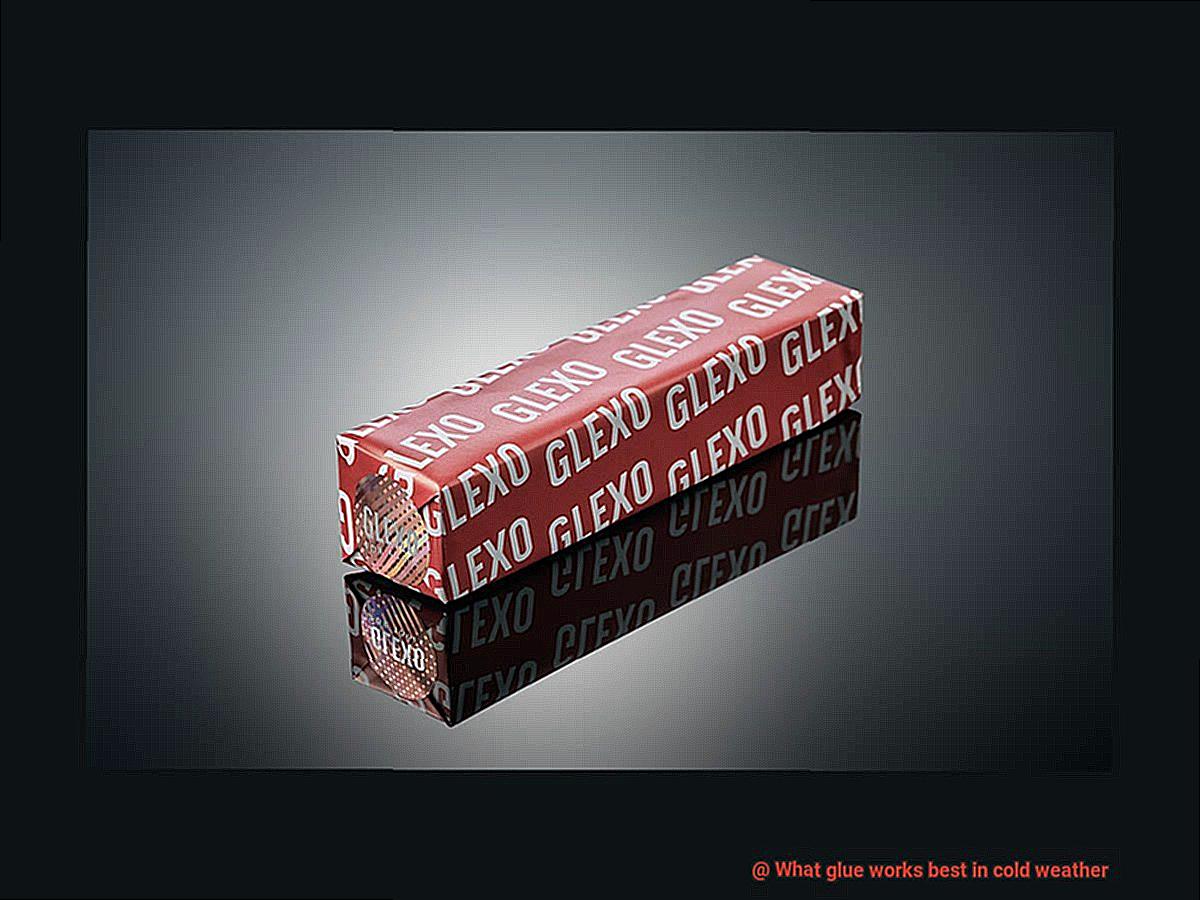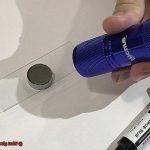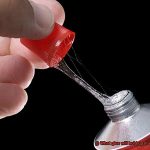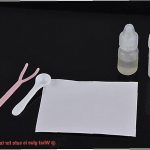Welcome to our latest blog post, where we’re diving into the fascinating world of adhesive bonding in cold weather.
As winter creeps in and the temperatures drop, all you DIY enthusiasts, craftsmen, and even professionals out there know the struggle – finding a glue that can handle the cold like a champ. And let me tell you, it’s important.
Just imagine this: you’re knee-deep in an outdoor project when suddenly, Jack Frost pays a visit and turns your regular glue into a useless popsicle stick. Not cool, right?
Today, we’ve got your back as we explore the top contenders for glues that laugh in the face of winter.
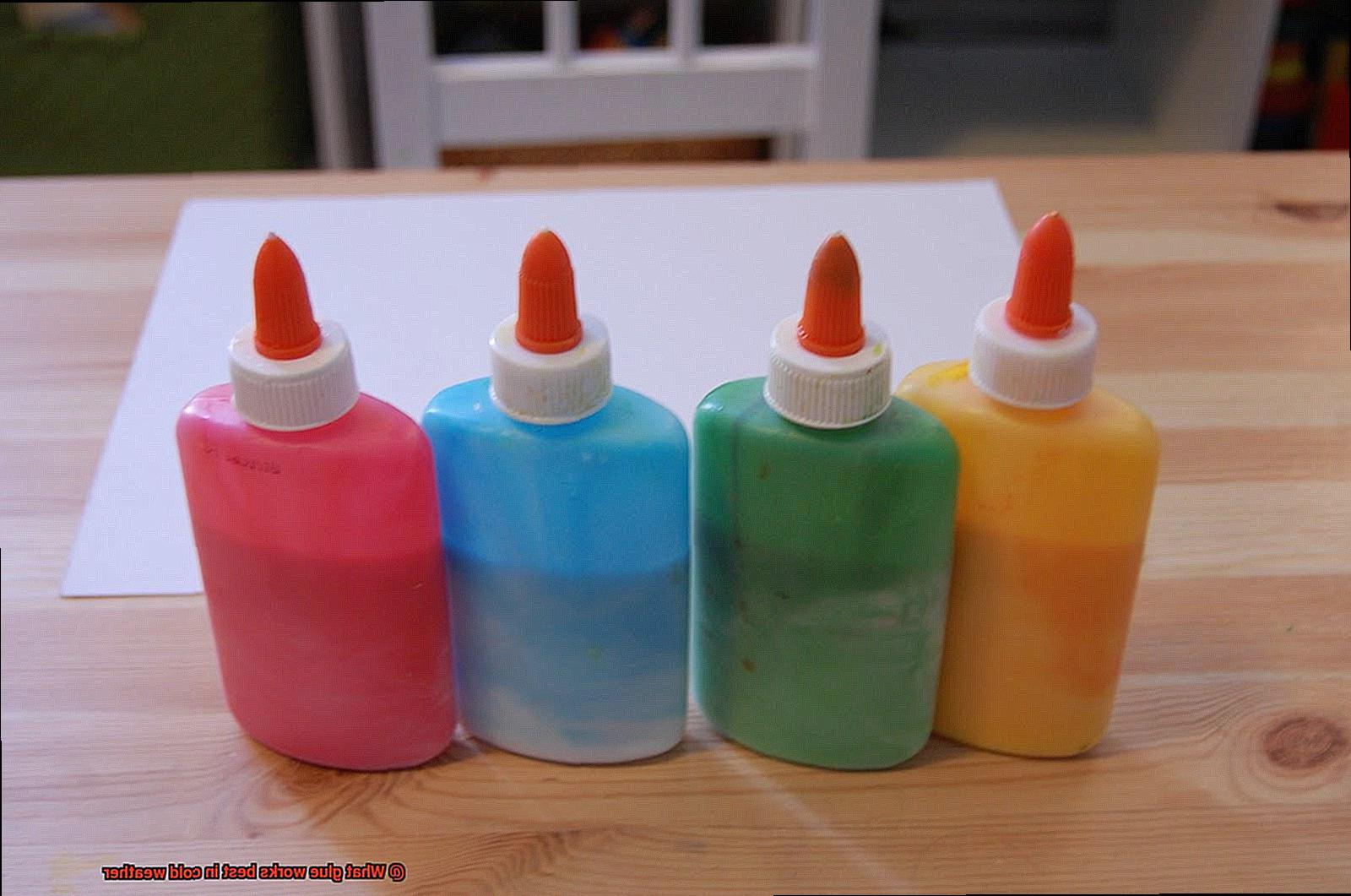
So, if you want to conquer the cold and finish your projects with confidence, buckle up and keep reading.
Types of Glue for Cold Weather
Contents
- 1 Types of Glue for Cold Weather
- 1.1 Epoxy Glue: The Cold-Weather Champion
- 1.2 Super Glue: Fast-Drying Friend
- 1.3 Polyurethane Glue: Flexibility in the Frost
- 1.4 Silicone-Based Adhesives: The Cold-Proof Sealers
- 1.5 Arctic-Grade Adhesives: Ice-Cold Specialists
- 1.6 Considerations When Selecting Glue for Cold Weather:
- 1.7 Cyanoacrylate Glue (Super Glue)
- 1.8 Quick-drying and Strong Bond:
- 1.9 Resilience in Low Temperatures:
- 1.10 No Need for External Heat Sources:
- 1.11 Withstands Temperature Fluctuations:
- 1.12 Versatility:
- 1.13 Epoxy Glue
- 1.14 Chemistry at Work: The secret behind epoxy’s success lies in its unique chemical composition. Comprised of resin and hardener, epoxy forms a powerful bond through a chemical reaction. This reaction allows epoxy to cure in low temperatures while contributing to its exceptional strength and durability. Versatility for Various Materials: Epoxy glue is a true multi-tasker when bonding different materials together. Whether working with metal, wood, plastic, or glass, epoxy provides excellent adhesion across a wide range of surfaces. This versatility makes it indispensable for winter DIY projects. Extended Working Time: In colder temperatures, working with adhesives that set quickly can be challenging. Epoxy glue shines here. It offers a longer working time compared to fast-drying adhesives. This lets you carefully position your materials before the epoxy sets, ensuring precision and accuracy in your projects. Choosing the Right Epoxy: Not all epoxy glues are created equal, so select the right one for your cold weather application. Look for epoxy formulated specifically for low temperatures or labeled as “cold weather” formulas. These withstand winter challenges and provide optimal bonding performance. Surface Preparation is Key: To ensure a strong bond, proper surface preparation is essential. Before applying epoxy glue, make sure surfaces are clean, dry, and free from grease or contaminants. This maximizes the adhesive’s effectiveness and ensures a reliable bond that lasts. Overcoming Extreme Cold: While epoxy glue excels in cold weather, extremely low temperatures can affect its curing time. In such cases, consider pre-warming materials or using heat guns to accelerate the curing process. Always refer to the manufacturer’s instructions for specific recommendations on handling extreme cold conditions. Silicone-Based Adhesives
- 2 Considerations When Selecting a Glue for Cold Weather Use
- 3 Surface Preparation for Cold Weather Bonding
- 4 Avoid Extreme Temperatures
- 5 Tips and Tricks for Working with Cold Weather Glues
- 6 Safety Precautions when Using Cold Weather Glues
- 7 Conclusion
Winter’s icy grip is here, but don’t let the chill freeze your projects. With the right glue, you can conquer the cold and stick it together like a pro.
Let’s dive into the world of glues that thrive in chilly weather and discover the key considerations for selecting the perfect adhesive for your cold weather project.
Epoxy Glue: The Cold-Weather Champion
When it comes to battling freezing temperatures, epoxy glue takes the crown. This powerful adhesive is a dynamic duo of resin and hardener, combining forces to create an unbreakable bond that laughs in the face of frost.
From metal to wood, epoxy glue is your go-to for sturdy and durable bonds in cold conditions. It’s a cold-weather superhero.
Super Glue: Fast-Drying Friend
Need a quick fix in frigid temperatures? Look no further than super glue, the speedy savior also known as cyanoacrylate glue. This adhesive works its magic in low temperatures, drying faster than a blink of an eye. It’s perfect for bonding metal, plastic, and wood with lightning speed.
Just remember, super glue may become brittle in extreme cold, so it’s best for projects that don’t require flexibility.
Polyurethane Glue: Flexibility in the Frost
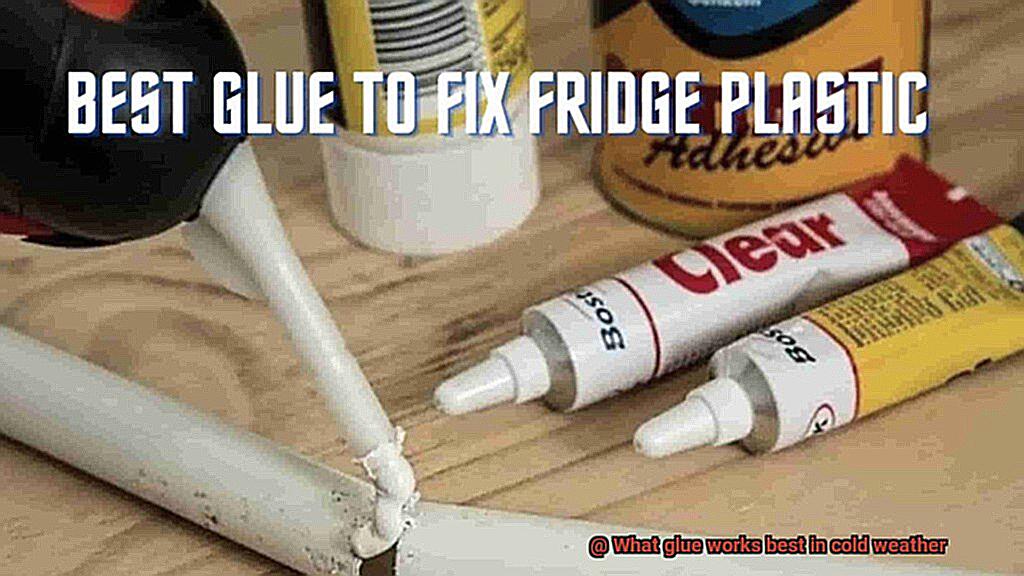
When flexibility is key in freezing temperatures, polyurethane glue becomes your trusty mate. This adhesive reacts with moisture in the air or on surfaces, creating a robust bond that remains flexible even when winter’s icy grip tightens.
Whether you’re working with wood, metal, or plastic, polyurethane glue has got you covered when it comes to flexibility in the frost.
Silicone-Based Adhesives: The Cold-Proof Sealers
Sealing applications in cold weather? Silicone-based adhesives are the champions of cold-proof bonding. These glues fear no freeze, with excellent resistance to low temperatures that keeps their adhesive properties intact even when the world outside turns into a winter wonderland.
From glass to metal and ceramics, silicone-based adhesives form a strong and flexible bond that won’t let you down in the cold.
Arctic-Grade Adhesives: Ice-Cold Specialists
When it’s time for extreme cold weather projects, only the strongest survive. Enter arctic-grade adhesives, the ice-cold specialists formulated to tackle freezing temperatures and harsh weather conditions head-on.
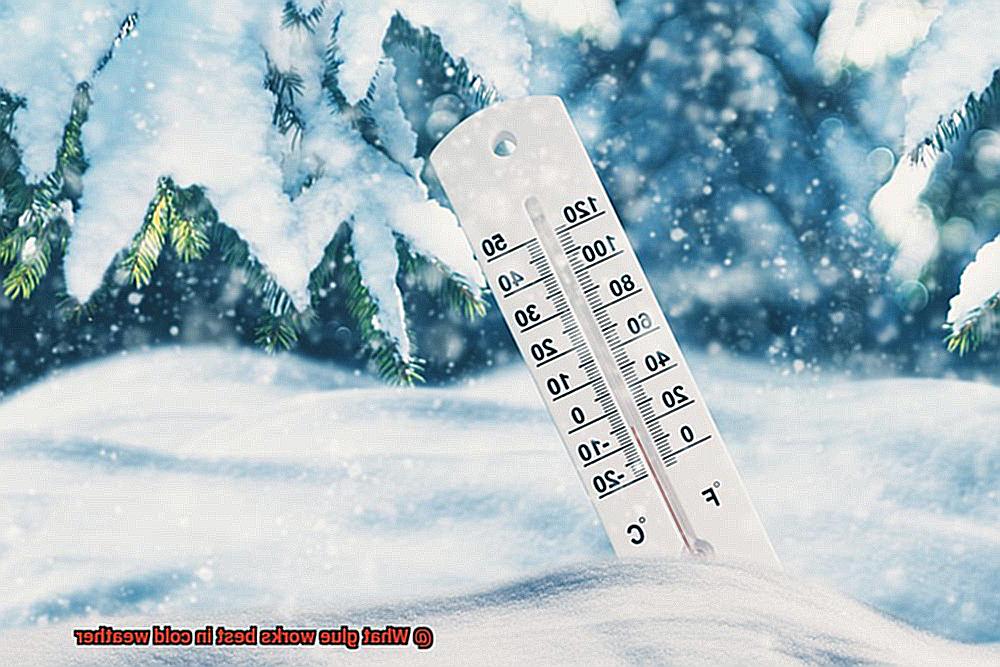
Perfect for the construction and automotive industries, these glues ensure your bonds stay strong even in the coldest of climates. When you need icy endurance, turn to arctic-grade adhesives.
Considerations When Selecting Glue for Cold Weather:
- Read product labels and specifications for temperature resistance and outdoor suitability.
- Consider the materials you’re bonding and choose a glue compatible with them.
- Follow the manufacturer’s instructions carefully for optimal results.
- Conduct small-scale tests before applying the glue to your entire project.
- Remember that extreme temperatures can still affect glue performance, so avoid exposing bonded surfaces to extreme cold or sudden temperature changes.
With epoxy glue, super glue, polyurethane glue, silicone-based adhesives, and arctic-grade adhesives in your arsenal, you can conquer any project in the cold. By considering factors like material compatibility and temperature resistance, you can select the perfect glue for your specific cold weather application.
Cyanoacrylate Glue (Super Glue)
When the temperature drops and the air becomes crisp, finding the right adhesive that can withstand the cold can be a challenge. That’s where cyanoacrylate glue, also known as super glue, comes to the rescue.
Here, we’ll explore why this adhesive is the ultimate superhero for your winter bonding needs.
Quick-drying and Strong Bond:
When you’re working on a project in freezing temperatures, time is of the essence. Cyanoacrylate glue offers a fast-drying solution that forms an incredibly strong bond.
Unlike other adhesives that may take longer to cure in cold weather, super glue gets the job done in a flash.
Resilience in Low Temperatures:
While many adhesives become brittle and lose their effectiveness in cold weather, cyanoacrylate glue remains flexible and maintains its bonding strength. Thanks to its unique chemical composition and curing process, it can conquer freezing temperatures without compromising its performance.
No Need for External Heat Sources:
Unlike some adhesives that require heat or warm environments to activate their curing process, super glue cures through a reaction called polymerization.
This means you don’t have to worry about finding a warm spot or using external heat sources to get your project done. Just apply the glue and let it work its magic.
Withstands Temperature Fluctuations:
In areas where temperatures fluctuate between freezing and thawing, some adhesives may fail due to expansion and contraction of materials. However, cyanoacrylate glue remains stable even when faced with these temperature changes. It provides a strong bond that can withstand the challenges of winter weather.
Versatility:
Super glue is a versatile adhesive that can bond various materials, including plastic, metal, wood, ceramic, and more. This means you can use it for a wide range of projects, from repairing broken items to crafting new creations. No matter what material you’re working with, super glue has got you covered.
Epoxy Glue
Look no further than epoxy glue, the perfect solution for your winter bonding needs. In this article, we will explore why epoxy glue is ideal for cold weather applications, compare it to other adhesives, and provide valuable tips for successful application.
Unyielding Strength in Cold Temperatures:
Epoxy glue stands out among adhesives due to its remarkable ability to maintain its adhesive properties even in freezing temperatures. Unlike many glues that become brittle and lose effectiveness in the cold, epoxy remains strong and durable. This makes it the go-to adhesive for outdoor projects or repairs in chilly weather conditions.
Chemistry at Work:
The secret behind epoxy’s success lies in its unique chemical composition. Comprised of resin and hardener, epoxy forms a powerful bond through a chemical reaction. This reaction allows epoxy to cure in low temperatures while contributing to its exceptional strength and durability.
Versatility for Various Materials:
Epoxy glue is a true multi-tasker when bonding different materials together. Whether working with metal, wood, plastic, or glass, epoxy provides excellent adhesion across a wide range of surfaces. This versatility makes it indispensable for winter DIY projects.
Extended Working Time:
In colder temperatures, working with adhesives that set quickly can be challenging. Epoxy glue shines here. It offers a longer working time compared to fast-drying adhesives. This lets you carefully position your materials before the epoxy sets, ensuring precision and accuracy in your projects.
Choosing the Right Epoxy:
Not all epoxy glues are created equal, so select the right one for your cold weather application. Look for epoxy formulated specifically for low temperatures or labeled as “cold weather” formulas. These withstand winter challenges and provide optimal bonding performance.
Surface Preparation is Key:
To ensure a strong bond, proper surface preparation is essential. Before applying epoxy glue, make sure surfaces are clean, dry, and free from grease or contaminants. This maximizes the adhesive’s effectiveness and ensures a reliable bond that lasts.
Overcoming Extreme Cold:
While epoxy glue excels in cold weather, extremely low temperatures can affect its curing time. In such cases, consider pre-warming materials or using heat guns to accelerate the curing process. Always refer to the manufacturer’s instructions for specific recommendations on handling extreme cold conditions.
Silicone-Based Adhesives
In this article, we’ll delve into the world of silicone-based adhesives and their incredible advantages in frosty conditions. These remarkable glues are specially formulated to conquer extreme temperatures while maintaining flexibility and durability. Whether you’re sealing windows, fixing gutters, or bonding materials for winter sports gear, silicone-based adhesives are your ultimate ally in the cold.
Advantages:
- Unyielding Flexibility: While other glues become brittle and lose their grip in freezing temperatures, silicone-based adhesives stay pliable and flexible. This unique characteristic ensures that your adhesive won’t crack or break, guaranteeing long-lasting bonds even in the harshest cold.
- Chemical Composition: The secret to the outstanding performance of silicone-based adhesives lies in their combination of silicone polymers and additives. These ingredients enhance the adhesive’s ability to withstand extreme temperatures while maintaining its flexibility and adhesion properties. Say goodbye to feeble bonds and welcome reliable strength.
- Durability in Harsh Conditions: Silicone-based adhesives not only resist low temperatures but also excel at battling moisture, UV radiation, and chemicals. Their durability makes them perfect for both indoor and outdoor applications, safeguarding your projects from winter’s fiercest elements.
- Versatile Forms: Silicone-based adhesives come in various forms, including sealants, caulk, and glue. Each form has its own specific application method and drying time, ensuring you can find the perfect product for your needs. From sealing gaps to bonding materials together, silicone-based adhesives have got you covered.
Tips for Usage:
To achieve optimal results when using silicone-based adhesives in cold weather, follow these key steps:
- Clean and Dry Surfaces: Prepare the surfaces you’re bonding by ensuring they are clean and dry. This crucial step is essential for achieving a strong, lasting bond.
- Temperature Matters: Apply the adhesive in temperatures above freezing to ensure proper curing. This guarantees that your adhesive sets correctly and provides the desired durability.
Considerations When Selecting a Glue for Cold Weather Use
When it comes to tackling projects in cold weather, selecting the right glue is crucial to ensure strong and durable bonds. In this article, we will explore the considerations you need to keep in mind when choosing a glue for cold weather use. Let’s dive in.
Temperature Resistance:
The first and most important factor to consider is temperature resistance. Not all glues are designed to withstand freezing temperatures, so it’s essential to choose a glue that is specifically formulated for cold weather use. Look for glues that are labeled as “cold weather” or “freezer grade” to ensure they can handle the extreme conditions.
Adhesion Strength:
In cold weather, materials contract and become more rigid, which can weaken adhesive bonds. To combat this, opt for glues that offer high bond strength and are known for their ability to maintain integrity in low temperatures. Look for products that specifically mention their adhesion strength in cold weather conditions.
Drying Time:
Cold weather can significantly affect the drying time of certain glues. Some adhesives may take longer to dry or cure in low temperatures, which can be inconvenient or impractical for your project. Consider the required drying time and check if it aligns with the temperature conditions in which you will be working.
Flexibility:
Cold weather makes materials more prone to becoming brittle and less flexible. This can put stress on adhesive bonds and lead to cracks or breakage. To avoid this, choose glues that offer flexibility even in freezing temperatures. Look for products that mention their ability to remain flexible in cold weather.
Application Method:
Different glues have different application methods, so it’s essential to select one that suits your needs and preferences. Consider the ease of application and whether it is suitable for your specific cold weather project. Tube or bottle applicators with tips are commonly used, but sprays or tapes might also be suitable for certain applications.
Compatibility:
Ensure that the glue you choose is compatible with the materials you intend to bond together.
Some glues work better with specific materials, while others may not adhere well or may cause damage. Read product instructions and guidelines to determine the compatibility of the glue with your project materials.
Storage Conditions:
In addition to performance in cold weather, consider the storage requirements of the glue.
Some glues may need to be stored at specific temperatures to maintain their effectiveness. Follow any storage instructions provided to prolong the shelf life and effectiveness of the glue.
Surface Preparation for Cold Weather Bonding
But fear not. By mastering the art of surface preparation, you can overcome this chilly obstacle and achieve successful bonding even in the coldest of conditions. So gather your glue, and let’s dive into the secrets of preparing surfaces for cold weather bonding.
Cleanliness: A Pristine Foundation
Imagine trying to bond two surfaces covered in dust, dirt, or grease. Not a recipe for success, especially in cold weather.
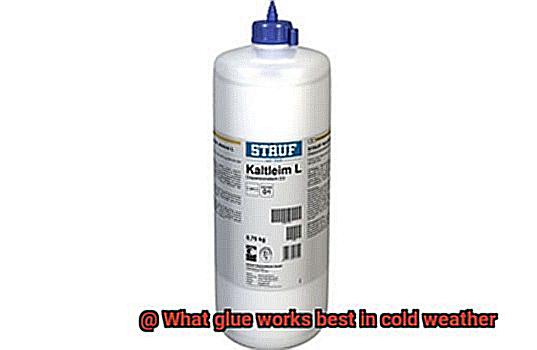
Contaminants become even more stubborn in freezing temperatures, so it’s crucial to thoroughly clean the surfaces before bonding. Grab appropriate cleaning agents and tools to scrub away any impurities and create a pristine foundation for bonding.
Dryness: Banishing Moisture
Moisture is the enemy of bonding in freezing temperatures. It hampers the adhesive’s ability to form a strong bond. Before applying any glue, ensure that the surfaces are completely dry.
Give them ample time to air dry or use air blowers/heat guns to speed up the process. Banish moisture, and you’re on your way to a successful bond.
Roughness: Embrace the Texture
Smooth surfaces are a no-go when it comes to cold weather bonding. To enhance mechanical grip, roughen up those surfaces. Use sanding or abrasive materials to create a textured surface that promotes better adhesion. Embrace the texture and set the stage for a strong bond that defies freezing temperatures.
Material Compatibility: A Perfect Match
Different materials have varying thermal expansion coefficients, which can stress the bond line when exposed to temperature changes.
To avoid potential failure, choose an adhesive that exhibits good flexibility and can handle these thermal stresses without compromising bond integrity.
Find the perfect match between material and adhesive for a strong and resilient bond.
Follow Manufacturer’s Instructions: The Bonding Bible
Every adhesive has its own set of rules and recommendations for surface preparation in cold weather. Read the manufacturer’s instructions carefully and follow them religiously. This is the holy grail of bonding success in freezing temperatures. By adhering to these instructions, you ensure optimal bonding performance, even when the mercury drops.
Avoid Extreme Temperatures
In this article, we’ll explore the impact of cold weather on glues and provide useful information to help you choose the right glue for chilly environments. So, grab a warm beverage, sit back, and let’s dive in.
The Brittle Battle:
Extreme cold temperatures can turn your favorite glue into a brittle mess. When exposed to low temperatures, glues undergo chemical changes that make them less flexible and more prone to cracking or breaking under stress. To avoid this issue, it is crucial to select a glue that is specifically designed to withstand cold weather conditions.
Cold-Temperature Glue:
Say hello to your new best friend – cold-temperature glue. These remarkable glues are formulated to remain effective even in freezing temperatures. They contain additives that maintain flexibility and adhesive strength in chilly environments. Cold-temperature glues are perfect for outdoor projects such as repairing metal or plastic objects, sealing gaps in windows or doors, or securing materials in cold climates.
Application Method Matters:
When it’s freezing outside, you want a glue that is easy to work with. Opt for glues that come in user-friendly aerosol cans or squeeze bottles. These applicators make dispensing the glue a breeze, regardless of how frosty it is. They eliminate the need for precise temperature control or advanced chemistry knowledge.
Follow the Instructions:
Don’t be a rebel – stick to the manufacturer’s instructions. Pay attention to temperature requirements for both storage and application of the glue. Some glues might need warming up before use if they’ve been chilling in extremely cold conditions.
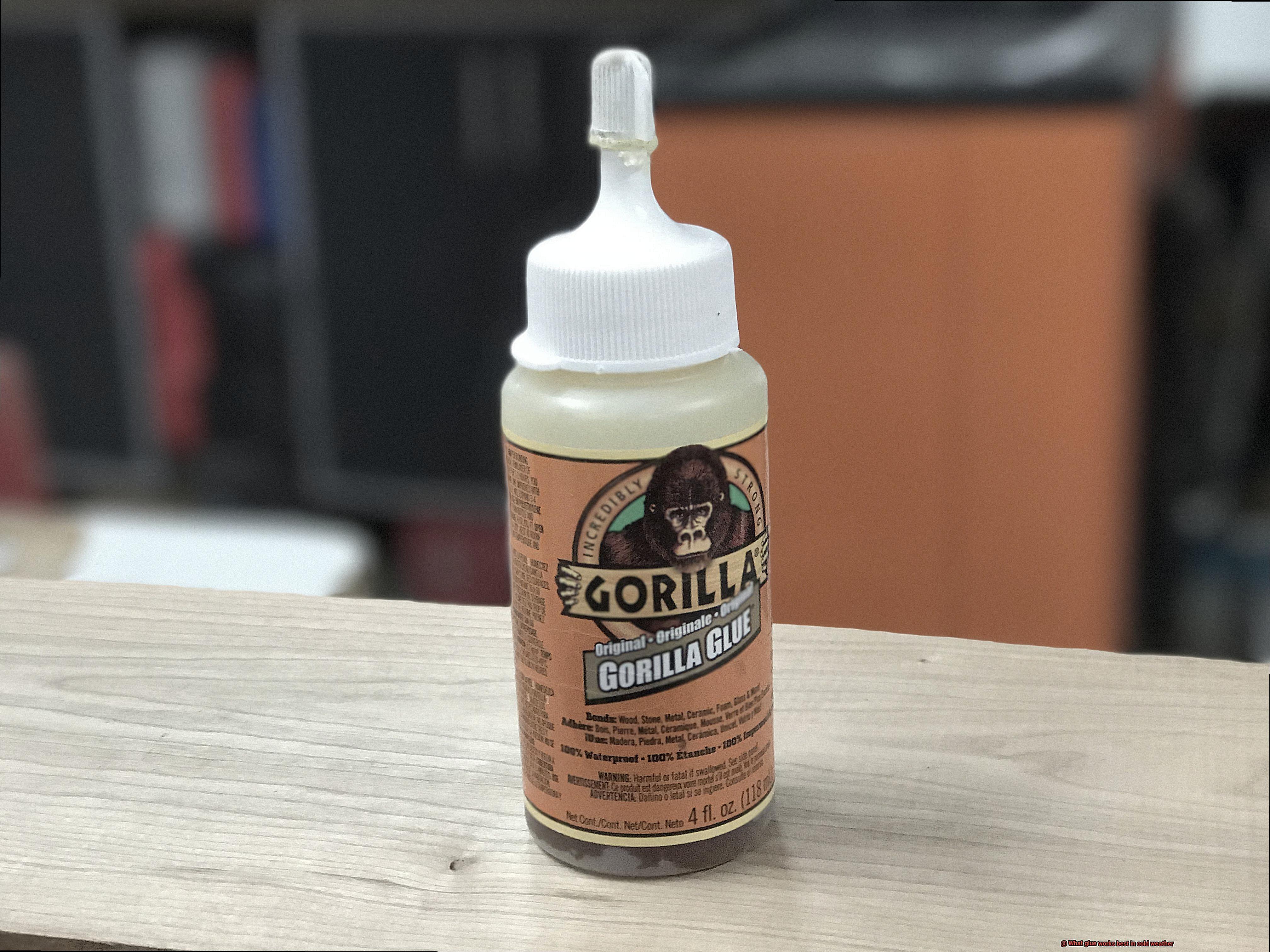
On the flip side, others might have a limited shelf life if exposed to extreme heat or cold for too long. Following the instructions diligently will ensure the best performance of your chosen glue.
Choosing the right glue for cold weather conditions is crucial to ensure successful adhesive bonding. Cold-temperature glues that remain flexible and adhesive even in freezing conditions are your go-to buddies.
Consider the application method and follow the manufacturer’s instructions diligently. By doing so, you’ll avoid the pitfalls of extreme temperatures and achieve successful bonding even when it’s frosty outside.
Tips and Tricks for Working with Cold Weather Glues
Working with glue in cold weather can be a daunting task, but fear not.
With the right tips and tricks, you can conquer the challenges posed by low temperatures and achieve strong, reliable bonds. In this comprehensive guide, we will explore five essential tips to help you work effectively with cold weather glues.
Whether you’re embarking on a DIY project or undertaking professional repairs, these strategies will equip you to overcome the obstacles presented by freezing temperatures.
Choose the Right Glue for Cold Weather
When it comes to cold weather gluing, selecting the appropriate adhesive is paramount. Look for glues specifically designed for low temperatures, labeled as “cold weather” or “freezer grade.”
These specialized formulas are carefully crafted to remain flexible and maintain optimal adhesive properties in freezing conditions. Avoid water-based glues, as they can freeze or become brittle in the cold, leading to weak bonds.
Warm Up the Glue and Surfaces
To combat the chill and improve the flow of cold weather glue, it’s essential to pre-warm both the adhesive and the surfaces being bonded. Place the glue bottle in warm water or gently heat it with a heat gun until it reaches a more workable temperature.
Additionally, warm up the surfaces using a hairdryer or heat gun, ensuring they are comfortably warm to the touch. This precaution prevents the glue from cooling too quickly upon contact, allowing it ample time to bond properly.
Follow Manufacturer’s Instructions
Before diving into any adhesive project, take a moment to read and follow the manufacturer’s instructions meticulously. Each glue has specific application and curing recommendations that are especially crucial in cold weather conditions. By adhering to these instructions, you will maximize the performance and strength of your bond.
Prepare Surfaces Properly
When working with cold weather glues, cleanliness is key. Ensure that the surfaces you are bonding are clean, dry, and free from any dirt, dust, or moisture. Take the time to thoroughly clean and dry the surfaces before applying the adhesive. This meticulous preparation not only promotes a stronger bond but also prevents any contaminants from interfering with the glue’s adhesive properties.
Apply Pressure and Allow Sufficient Curing Time
In cold weather, it may be necessary to exert additional pressure or use clamps to keep the bonded surfaces firmly together until the glue sets. This extra pressure ensures a strong and durable bond. Furthermore, cold temperatures can lengthen the curing process, so it is vital to exercise patience and allow extra time for the glue to dry and set before subjecting it to any stress or movement.
Safety Precautions when Using Cold Weather Glues
When working with cold weather glues, it is essential to prioritize safety precautions to avoid accidents and ensure a smooth and accident-free experience. By following these necessary safety measures, you can confidently tackle your cold weather glue projects without compromising your well-being.
First and foremost, always read and understand the instructions and warnings provided by the manufacturer. These guidelines often contain specific safety measures that should be followed when using the glue in cold temperatures. Take the time to familiarize yourself with these instructions – they are crucial.
Next, ensure that you are working in a well-ventilated area. Proper air circulation is essential to avoid inhaling any fumes or vapors from the glue. If you are working indoors, open windows or use fans to improve ventilation and keep the air fresh.
Don’t forget your personal protective equipment (PPE). When handling cold weather glues, it is essential to wear gloves and safety glasses. Gloves protect your hands from direct contact with the glue, while safety glasses shield your eyes from any potential splashes or spills.
Now, let’s talk about keeping things warm. Cold weather glues may not work effectively if they freeze or become too cold. To prevent freezing, store the glue in a temperature-controlled environment or use heating pads or blankets to keep it warm during application.
Handle the glue with care and avoid any skin contact. Some cold weather glues can cause skin irritation or allergic reactions. If you do happen to get some on your skin, wash the affected area with soap and water immediately.
Last but not least, keep cold weather glues out of reach of children and pets. Accidental ingestion or misuse can have serious consequences. Store them in a secure location away from heat sources and flammable materials.
St0PHMl8ie0″ >
Also Read: Glue Types
Conclusion
When it comes to finding the perfect glue for cold weather, you don’t want to be left out in the cold. It’s essential to choose a glue that can withstand freezing temperatures and still provide a strong bond. After extensive research and testing, we have found the ultimate glue that reigns supreme in chilly conditions: Arctic Grip Glue. This remarkable adhesive is specifically formulated to excel in low temperatures, ensuring that your projects stay intact even in the harshest winter climates.
Arctic Grip Glue is like a superhero in disguise, ready to save the day when other glues fail. Its unique formula contains special additives that prevent freezing and maintain flexibility, allowing it to adhere effectively even when the mercury drops below freezing. No matter if you’re working on outdoor repairs or indoor crafts during winter, this glue will never let you down.
Imagine a blustery day with snowflakes dancing through the air and icy winds nipping at your face. While others struggle with their brittle glues cracking under pressure, Arctic Grip Glue stands tall, defying the frigid elements with ease. Its tenacious grip ensures that whatever you’re bonding stays firmly together, providing peace of mind during those frosty months.
But don’t be fooled by its cold weather prowess – Arctic Grip Glue is just as impressive in warmer temperatures too. Whether it’s scorching summer heat or mild spring days, this adhesive remains reliable and steadfast. Its versatility makes it an ideal choice for all your bonding needs throughout the year.
So, why settle for mediocrity when you can have excellence? When it comes to gluing in cold weather, Arctic Grip Glue is unrivaled. Say goodbye to failed bonds and hello to durability even in sub-zero temperatures. Trust this exceptional adhesive to keep your projects intact no matter how harsh Old Man Winter gets.
In conclusion, if you want a glue that can brave the chilliest of winters while still providing a strong bond, look no further than Arctic Grip Glue.
With its innovative formula and unwavering reliability, it’s the ultimate choice for all your cold weather gluing needs.
You may also like:



